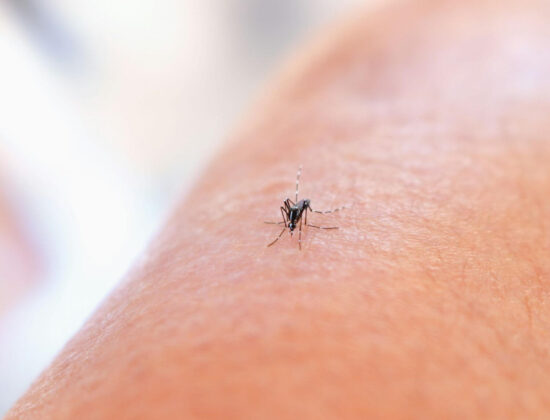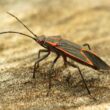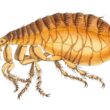Nobody likes getting eaten alive by mosquitoes during a nice evening outdoors. These tiny bloodsuckers seem to appear out of nowhere, turning a perfect barbecue or camping trip into an itchy nightmare. But mosquitoes don’t just randomly show up whenever they feel like it. They actually follow pretty predictable patterns based on the time of day, weather, and season.
Let’s break down exactly when mosquitoes come out, so you can stay one step ahead of them.
1. Dawn and Dusk: Peak Mosquito Hours
The worst times to be outside without bug spray are right around sunrise and sunset. Most mosquitoes are especially active during dusk and dawn because these periods provide the ideal balance of humidity and temperature, which are less harsh than the conditions found during the middle of the day.
- 4200V electric grid zaps mosquitoes, flies, moths, and gnats fast
- Covers up to ½ acre—great for patios, gardens, and camping
- Chemical-free pest control, safe around pets and kids
- Easy setup with hanging loop, removable tray, and replaceable bulb
Different types of mosquitoes have slightly different schedules, but they all share one thing in common: they hate bright sunlight. Direct sunlight and heat will quickly dehydrate mosquitoes and cause them to die. That’s why they wait until the sun starts going down to come out for dinner.
Culex mosquitoes are most active outdoors between 8:00 pm to 6:00 am during peak mosquito season. These are the common house mosquitoes that you might hear buzzing around your bedroom at night. Aedes mosquitoes, which include the aggressive Asian tiger mosquito, are most active from 5:00am to 7:00am and from 7:00pm to 9:00pm.
The good news is that the best time for outdoor activities during mosquito season is during the middle of the day, especially when it’s bright and sunny. So if you’re planning a picnic or outdoor workout, aim for those midday hours when the sun is high and mosquitoes are hiding in cool, shady spots.
2. Temperature: The 50 to 80 Degree Sweet Spot
Temperature plays a huge role in mosquito activity. These insects are cold-blooded, which means they can’t control their own body temperature like humans do. The magic number is 50°F when temperatures reach this threshold consistently, mosquitoes will emerge from hibernation or eggs will start hatching.
When temperatures reach 80°F or more, you see a lot more mosquito activity. This is their sweet spot where they can fly around, feed, and reproduce most easily. Temperature and mosquito activity goes hand in hand with the insects flourishing in moist, relatively warm environments, functioning best at 80°F.
But it can actually get too hot for mosquitoes too. Mosquito-suitable days are defined as having temperatures between 50-95°F. When it gets above 95 degrees, even mosquitoes start looking for air conditioning.
On the flip side, cooler weather puts mosquitoes into slow motion. Once the temperature lowers to about 60°F they become lethargic and anything below 50°F they find it hard to function at all. As the temperature drops, many species of mosquitoes enter a state of hibernation or dormancy known as diapause.
This is why you barely see any mosquitoes during winter in most places. They’re either dead, hibernating, or their eggs are waiting for warmer weather to hatch.
3. Seasonal Patterns: When Mosquito Season Starts and Ends
Mosquito season isn’t the same everywhere. If you live in Florida, you might deal with these pests almost year-round. But if you’re in Alaska, you only have to worry about them for a few months during summer.
In tropical and subtropical regions like Florida and Hawaii, this region’s warm, humid and wet climate means a lengthy mosquito season from February through November. Lucky them, right?
For residents of southern California, Arizona, New Mexico, northern Texas, Louisiana, Mississippi, Alabama, Georgia, Tennessee, South Carolina and parts of coastal North Carolina, mosquito season lasts most of the year and starts in March.
Most of the country falls into the moderate category. States like California, Nevada, Utah, Colorado, Nebraska, Kansas, Missouri, Kentucky, Illinois, Ohio, West Virginia, Virginia, Maryland and Pennsylvania typically experience mosquito season from April through September.
The northern states get the shortest mosquito seasons. States like Washington, Montana, North Dakota, South Dakota, Minnesota, Wisconsin, Michigan, New York, Massachusetts, Vermont, New Hampshire and Maine experience mosquito season from May through September. Alaska has a bit of a shorter season that lasts from June to August.
- 4200V electric grid zaps mosquitoes, flies, moths, and gnats fast
- Covers up to ½ acre—great for patios, gardens, and camping
- Chemical-free pest control, safe around pets and kids
- Easy setup with hanging loop, removable tray, and replaceable bulb
But here’s something concerning: mosquito seasons are getting longer. From 1979 to 2022, 173 locations (71% of the 242 analyzed) experienced an increase in annual mosquito days by about 16 days on average. Climate change is giving mosquitoes more time to bother us each year.
The actual preparation for mosquito season should begin much earlier before the mosquitoes have had the chance to propagate. Remember, as the weather warms, the mosquito breeding cycle time shortens, which ultimately results in an increase in the number of mosquitoes.
4. Species-Specific Activity Patterns: Not All Mosquitoes Are the Same
Not all mosquitoes follow the same schedule. The United States has over 175 different species of mosquitoes, and they each have their own preferences for when to be active.
Culex Mosquitoes (The Night Shift)
The Culex mosquito is a nighttime biter, preferring to feed between dusk and dawn. These are often called house mosquitoes because they love hanging around homes. The common house mosquito is most likely to bite during the evening or the first few hours of the night.
Species of mosquitoes most active at night are likely to bite early in the evening when they first stir from their hiding places. After a night of activity, they will seek out places to rest before dawn.
Culex mosquitoes can spread West Nile virus and other diseases, so they’re not just annoying but potentially dangerous too.
Aedes Mosquitoes (The Day Shift)
The Aedes mosquito is a daytime biter. Its peak feeding times are during the early morning and late afternoon. Aedes mosquitoes are crepuscular insects, often referred to as “dusk and dawn biters”.
The Asian tiger mosquito tends to bite during the day, while the common house mosquito is most likely to bite during the evening. Some species, notably the Aedes species, prefer to bite during the day.
These mosquitoes are particularly aggressive and can spread serious diseases like Zika, dengue, chikungunya, and yellow fever. The good news is that Aedes mosquitoes are also active throughout the day, especially when they’re indoors or in shady areas, or when the weather is cloudy.
Anopheles Mosquitoes (The Midnight Snackers)
The female Anopheles mosquito must feed on blood in order to get the necessary nutrients to grow their eggs; they tend to be nocturnal biters, usually biting late in the evening or at night.
These mosquitoes are most famous for spreading malaria, though that’s not a major concern in most parts of the United States. Depending on the exact species, some of these mosquitoes are crepuscular (active mostly at dusk and dawn) while others are nocturnal (active throughout the night).
5. Weather Conditions: Rain, Humidity, and Mosquito Explosions
Weather has a massive impact on mosquito activity. Understanding how rain, humidity, and other conditions affect these pests can help you predict when they’ll be most active.
Humidity Is Key
Mosquito-suitable days require average relative humidity of 42% or more. In general, high humidity conditions favor mosquito activity, while low humidity suppresses activity and may even cause mortality.
Mosquitoes thrive in humid environments, as moisture aids in their survival and reproduction. High humidity levels can increase mosquito activity, making them more persistent in seeking hosts.
During humid weather, homeowners may notice an increase in mosquito activity, especially in areas with dense vegetation and shade where moisture tends to accumulate.
- 4200V electric grid zaps mosquitoes, flies, moths, and gnats fast
- Covers up to ½ acre—great for patios, gardens, and camping
- Chemical-free pest control, safe around pets and kids
- Easy setup with hanging loop, removable tray, and replaceable bulb
Rain Creates Mixed Results
You might think rain would wash mosquitoes away, but it’s more complicated than that. When there is rain, a large amount or small amount, there will be an increased rate of breeding. Mosquitoes require stagnant water to lay their eggs in, so the more puddles on the ground the better the environment for these eggs.
Many people don’t realize how little water mosquitoes need. It only takes about a bottle cap of water for a female mosquito to lay eggs and each time she deposits her eggs she drops around 300.
While rain may have some temporary impact on mosquito populations by getting rid of certain breeding sites, it unfortunately doesn’t significantly reduce their overall activity. Mosquitoes are highly adaptable insects that can quickly find new breeding grounds after rainfall.
Standing water from rainwater can create new breeding sites by collecting in various objects, such as empty containers, flower pots, or even tire tracks. These small pools of water can become ideal breeding grounds for mosquitoes.
Wind Can Ground Them
Strong winds actually help keep mosquitoes away. Studies using mosquito traps showed that catches of gravid mosquitoes decreased when wind speed went up. Rainfall, if heavy enough may injure flying, exposed mosquitoes and force them to seek shelter, thus preventing flight.
So if you have to be outdoors during peak mosquito hours, a breezy evening is better than a calm one.
6. Moon Phases: The Surprising Lunar Connection
Here’s something that might surprise you: the moon affects mosquito activity. A full moon can increase mosquito activity, possibly up to 500 percent, according to some studies.
Those female mosquitoes that are normally active at night will lay eggs at dusk, early nightfall and during moonlit nights. The extra light from a full moon seems to encourage mosquitoes to be more active during their normal nighttime hours.
Light trap catches were three to four times as effective at the new moon compared to full moon. This suggests that mosquitoes are actually more active when it’s darker outside, probably because they use the natural light to navigate and hunt for food.
What does this mean for you? If you’re planning an evening outdoor event, check the moon phase. A new moon night might actually be better for avoiding mosquito bites than a bright, full moon night.
The science behind this is still being studied, but it likely has to do with how mosquitoes use light to navigate and find food. Brighter moonlight might interfere with their normal hunting patterns, while very dark nights give them ideal conditions to seek out their next meal.
7. Geographic Hotspots: Where Mosquitoes Thrive Most
Where you live makes a huge difference in how many mosquitoes you’ll encounter. Some states are just mosquito magnets, while others barely have any.
The Mosquito Champions
According to the American Mosquito Control Association, West Virginia has the fewest number of mosquito species (26), while Texas has the most (85). Texas wins the prize nobody wants.
The Southeast and South experience the most annual mosquito days (over 50% of the year). States like Florida, Louisiana, Mississippi, Alabama, and Georgia deal with mosquitoes for most of the year.
High-Risk Environments
Certain environments are like mosquito paradise. People who spend time or live near wooded areas, wetlands or shaded places with standing water, which is a breeding ground for mosquitoes, are at increased risk of bug bites.
Most mosquitoes prefer shady, humid, and wet areas such as forests or anywhere that has access to standing water. If your home is near any of these features, you’ll probably see more mosquito activity than someone living in a dry, open area.
Urban areas aren’t safe either. Cities with poor drainage, lots of containers that collect rainwater, or areas with ornamental ponds and water features can become mosquito breeding grounds.
Climate Change Is Making It Worse
The Ohio Valley and Northeast saw the largest region-wide increase in mosquito days since 1979. Areas that used to have shorter mosquito seasons are now dealing with these pests for longer periods each year.
173 locations (71% of the 242 analyzed) experienced an increase in annual mosquito days by about 16 days on average. That’s more than two extra weeks of mosquito season compared to 40 years ago.
This means even if you live somewhere that traditionally hasn’t had bad mosquito problems, that might be changing. Northern states are seeing mosquitoes active earlier in spring and later into fall than ever before.
8. Indoor vs. Outdoor Activity: When Location Changes Everything
Mosquitoes behave very differently when they get inside your house compared to when they’re outside. Understanding these differences can help you protect your home and plan your indoor and outdoor activities better.
Indoor Mosquito Behavior
Once a mosquito gains entry into a home or building, they are protected from dehydration and more likely to fly around for many more hours than they normally would. They stay active longer because of the temperature and light controls in your home.
If one gets inside, it will likely bite repeatedly throughout the night simply because there aren’t other targets. This is why that single mosquito in your bedroom seems to find you over and over again.
Indoor mosquitoes don’t follow the same daily schedule as outdoor ones. They’re not worried about sunlight dehydrating them or temperature changes, so they can be active at any time of day or night.
Outdoor Microenvironments
During the day, mosquitoes seek out cool, shaded and wet areas until dusk returns. During the day, you will most likely find mosquitoes in shaded or wet areas.
Anopheles mosquitoes are generally attracted to dark, sheltered areas for resting during the daytime. Think under deck furniture, in garden sheds, or in dense bushes and shrubs.
Any area with standing water becomes a hotspot for mosquito activity. This includes birdbaths, clogged gutters, flower pot saucers, old tires, and even small puddles that form after rain.
Seasonal Indoor Migration
Fall is when you might notice more mosquitoes trying to get inside. Mosquitoes that survive winters hide in sheltered areas or items that you rarely touch. For example, they usually hibernate in storage boxes, tires, and unused yard equipment.
Some mosquitoes will try to move indoors before winter hits, looking for warm places to hibernate. Basements, garages, and storage areas are common hiding spots.
During winter in heated buildings, you might occasionally see a mosquito that woke up from hibernation due to the warm indoor temperatures. These are usually sluggish and easy to catch.
Spring brings the opposite problem. Mosquitoes that hibernate indoors or nearby will become active again when temperatures warm up. Once temperatures consistently stay above 50 degrees Fahrenheit, hibernating adult mosquitoes begin to emerge and their winter eggs hatch.
Timing Your Defense Strategy
Now that you know when mosquitoes are most active, you can plan your activities and protection strategies accordingly. The key is being prepared for the times when mosquitoes are most likely to be out looking for their next meal.
Best Times for Outdoor Activities
The safest times to be outside without heavy bug protection are during the middle of the day when the sun is bright and strong. All types of mosquitoes are least likely to bite during the middle part of the day when the sun and heat are at their peak.
Plan outdoor activities like gardening, sports, or picnics between 10 AM and 4 PM when possible. The combination of bright sunlight, lower humidity, and higher temperatures makes this the least comfortable time for mosquitoes to be active.
If you’re planning evening activities, new moon periods might give you a slight advantage since a full moon can increase mosquito activity, possibly up to 500 percent.
High-Alert Times
Be extra prepared during dawn and dusk hours, especially during warm weather. Many types of mosquitoes prefer to be active at dusk or in the evenings, so this is when you need the strongest protection.
After rainfall events, expect increased mosquito activity in the following days as new breeding sites fill with water and existing populations get a boost from the increased humidity.
If you are in an area where it is warm and rainy then it is pretty common for your mosquito activity to increase after a storm.
Year-Round Preparation
Start your mosquito prevention efforts before the season really gets going. You’ll want to get started while the weather is chilly, before the temperature consistently reaches that magical 50°F plateau.
The most important step is eliminating standing water around your property. Mosquitoes proliferate in stagnant water. Warm water that stays untouched is the favorite place for female mosquitoes to deposit their eggs.
Check your yard weekly for containers that might collect water: flower pots, buckets, toys, tarps, clogged gutters, and anything else that can hold even small amounts of water.
Monitor your local weather and mosquito forecasts. Some weather services even provide mosquito activity predictions based on temperature, humidity, and recent rainfall.
Remember that mosquito patterns can vary by location and year, so pay attention to local conditions and adjust your strategy accordingly. What works in Texas might not be the best approach in Minnesota, and a particularly wet spring might mean a worse mosquito season than usual.
By understanding when mosquitoes are most active and planning accordingly, you can enjoy more comfortable outdoor time and better protect yourself and your family from both annoying bites and potential mosquito-borne diseases.



